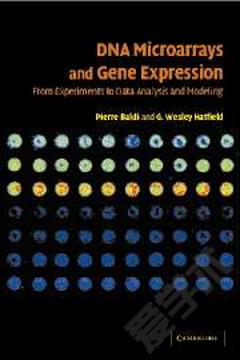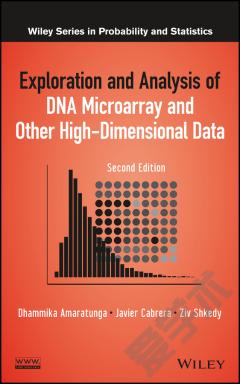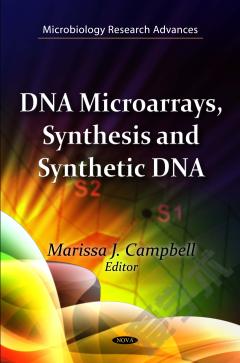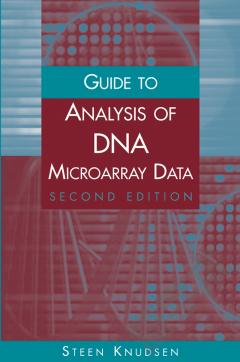DNA Microarrays and Related Genomics Techniques —— Design, Analysis, and Interpretation of Experiments
----- DNA微阵列和相关基因组学技术
Microarray Platforms and Blood Samples, P.M. Gaffney, K.L. Moser, E.C. Baechler, and T.W. Behrens Introduction Microarray Technology Autoantigen and Cytokine Microarrays DNA and Oligonucleotide Microarrays Tiling Arrays Data Analysis Future Directions References Normalization of Microarray Data, R.S. Parrish and R.R. Delongchamp Objectives of Normalization Statistical Basis of Normalization Normalization Algorithms Evaluating Normalization Methods References Microarray Quality Control and Assessment, D. Finkelstein, M. Janis, A. Williams, K. Steiger, and J. Retief Introduction Array Quality and Qesign Bioinformatic Quality Manufacturing Quality Experimental Design Quality Experimenatal Execution Quality Control Metrics Data Analysis Quality Quality of Interpretation Quality of Validation Making Decisions Based on Quality Conclusions References Epistemological Foundations of Statistical Methods for High-Dimensional Biology, S.O. Zakharkin, T. Mehta, M. Tanik, and D.B. Allison The Challenge We Face Our Vantage Point: From Samples to Populations What is Validity? Comparison of Different Methods Data Sets of Unknown Nature: Circular Reasoning The Search for Proof: Deduction The Proof of the Pudding is in the Eating: Induction Combined Modes Where to from Here? Acknowledgments References The Role of Sample Size on Measures of Uncertainty and Power, G.L. Gadbury, Q. Xiang, J. Edwards, G.P. Page, and D.B. Allison Introduction TP, TN, and EDR in Microarray Experiments Sample Size and Sources of Uncertainty in Microarray Studies On the Distribution of p-Values A Mixture Model for the Distribution of p-Values Planning Future Experiments: The Role of Sample Size on TP, TN, and EDR Sample Size and Threshold Selection: Illustrating the Procedure Discussion Acknowledgements References Pooling Biological Samples in Microarray Experiments, C.M. Kendziorski Introduction Derivation of the Analogous Formula Assumptions Used to Derive the Formula 9 Utility of Pooling Conclusion Designing Microarrays for the Analysis of Gene Expressions, J.Y. Chang and J.C. Hsu Two Approaches to Gene Expressions Analysis Designing 2-Channel Microarrays Modeling 2-Channel Microarray Gene Expression Data Estimation When the Microarray design is not Orthogonal Summary References Overview of Standard Clustering Approaches for Gene Microarray Data Analysis, E. Garrett-Mayer Introduction Distance and Similarity Measures Hierarchical Clustering K-means and K-medoids Self-Organizing Maps Cluster Affinity Search Technique Other Related Methods Assessing Cluster Fit and Choosing K Choosing Genes and Samples for Clustering Cluster Stability, B.S. Gorman and K. Zhang Cluster Stability Defining Stability A Brief Overview of Clustering Choice Points that Influence Stability and Instability A General Approach for Detecting Stable Cluster Solutions References Dimensionality Reduction and Discrimination, J. Kowalski and Z. Zhang Introduction Dimension Reduction Discrimination Conclusion References Modeling Affymetrix Data at the Probe Level, T.-M. Chu, S. Deng,and R.D. Wolfinger Introduction Models The Primate Example Simulation Study Discussion References Parametric Linear Models, C.S. Coffey and S.S. Cofield Introduction Existing Methods for Two-Group Comparisons Existing Methods for Linear Models A Comparison of the Methods Summary References The Use of Nonparametric Procedures in the Statistical Analysis of Microarray Data, T.M. Beasley, J.P.L. Brand, and J.D. Long Introduction Motivating Example Nonparametric Bootstrap Permutation-Based Nonparametric Methods Chebby Checker Methods Discussion Bayesian Analysis of Microarray Data, J.W. Edwards and P. Ghosh Introduction Probability of True Differential Expression Estimating the Null Distribution Estimating the Evidence Estimating the Prior Probability of Nondifferential Expression Hierarchical Models References False Discovery Rate and Multiple Comparison Procedures, C. Sabatti Multiple Comparison in Microarrays Multiple Testing Simultaneous Inference - Beyond Testing References Using Standards to Facilitate Interoperation of Heterogeneous Microarray Databases and Analytic Tools, K.-H. Cheung Introduction Using Standards to Tackle the Heterogeneity Problem Future directions Acknowledgements References Postanalysis Interpretation: "What Do I Do With this Gene List?" M.V. Osier Introduction Overview of Current Methods Knowledgebase Approaches Supplementary Data Approaches Tentative Function Assignment Approaches Future Directions Conclusions Acknowledgements References Combining High Dimensional Biological Data to Study Complex Diseases and Quantitative Traits, G.P. Page and D.M. Ruden Introduction Heritable Changes in Gene Expression Combined HDB Techniques to Identify Candidate or Causal Genes for Complex Diseases and Quantitative Traits Theoretical Papers Software and Bioinformatics Tools Issues With Combined High Dimensional Biological Projects Conclusions about Combined HDB Studies References
{{comment.content}}








 京公网安备 11010802027623号
京公网安备 11010802027623号